
Booker Taliaferro Washington was an American educator, author, orator, and adviser to several presidents of the United States. Between 1890 and 1915, Washington was the dominant leader in the African-American community and of the contemporary Black elite. Washington was from the last generation of black American leaders born into slavery and became the leading voice of the former slaves and their descendants. They were newly oppressed in the South by disenfranchisement and the Jim Crow discriminatory laws enacted in the post-Reconstruction Southern states in the late 19th and early 20th centuries.

Warm Springs is a city in Meriwether County, Georgia, United States. The population was 465 at the 2020 census.
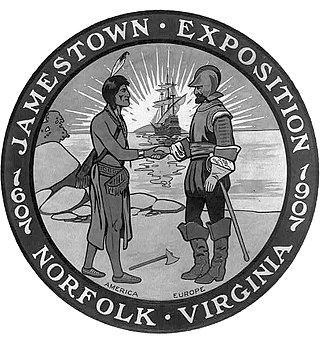
The Jamestown Exposition, also known as the Jamestown Ter-Centennial Exposition of 1907, was one of the many world's fairs and expositions that were popular in the United States in the early part of the 20th century. Commemorating the 300th anniversary of the founding of Jamestown in the Virginia Colony, it was held from April 26 to December 1, 1907, at Sewell's Point on Hampton Roads, in Norfolk, Virginia. It celebrated the first permanent English settlement in the present United States. In 1975, the 20 remaining exposition buildings were included on the National Register of Historic Places as a national historic district.

Tuskegee University, formerly known as the Tuskegee Institute, is a private, historically black land-grant university in Tuskegee, Alabama. It was founded on Independence Day in 1881 by the state legislature.
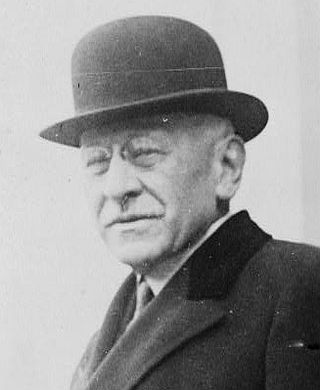
Julius Rosenwald was a Jewish American businessman and philanthropist. He is best known as a part-owner and leader of Sears, Roebuck and Company, and for establishing the Rosenwald Fund, which donated millions in matching funds to promote vocational or technical education. In 1919 he was appointed to the Chicago Commission on Race Relations. He was also the principal founder and backer for the Museum of Science and Industry in Chicago, to which he gave more than $5 million and served as president from 1927 to 1932.

The Little White House was the personal retreat of Franklin D. Roosevelt, the 32nd president of the United States, located in the Historic District of Warm Springs, Georgia. He first came to Warm Springs in 1924 for polio treatment, and liked the area so much that, as Governor of New York, he had a home built on nearby Pine Mountain. The house was finished in 1932. Roosevelt kept the house after he became President, using it as a presidential retreat. He died there on April 12, 1945, three months into his fourth term.

Mary Jane McLeod Bethune was an American educator, philanthropist, humanitarian, womanist, and civil rights activist. Bethune founded the National Council of Negro Women in 1935, established the organization's flagship journal Aframerican Women's Journal, and presided as president or leader for a myriad of African American women's organizations including the National Association for Colored Women and the National Youth Administration's Negro Division.

Tuskegee Airmen National Historic Site, at Moton Field in Tuskegee, Alabama, commemorates the contributions of African-American airmen in World War II. Moton Field was the site of primary flight training for the pioneering pilots known as the Tuskegee Airmen, and is now operated by the National Park Service to interpret their history and achievements. It was constructed in 1941 as a new training base. The field was named after former Tuskegee Institute principal Robert Russa Moton, who died the previous year.
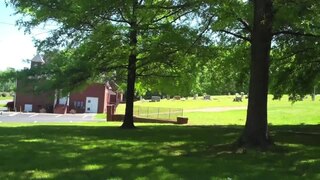
The Rosenwald School project built more than 5,000 schools, shops, and teacher homes in the United States primarily for the education of African-American children in the South during the early 20th century. The project was the product of the partnership of Julius Rosenwald, a Jewish-American clothier who became part-owner and president of Sears, Roebuck and Company and the African-American leader, educator, and philanthropist Booker T. Washington, who was president of the Tuskegee Institute.
The Rosenwald Fund was established in 1917 by Julius Rosenwald and his family for "the well-being of mankind." Rosenwald became part-owner of Sears, Roebuck and Company in 1895, serving as its president from 1908 to 1922, and chairman of its board of directors until his death in 1932.
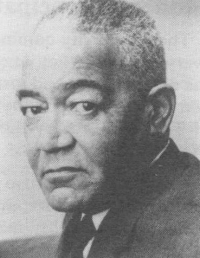
Horace Mann Bond was an American historian, college administrator, social science researcher and the father of civil-rights leader Julian Bond. He earned graduate and doctoral degrees from University of Chicago at a time when only a small percentage of any young adults attended any college. He was an influential leader at several historically black colleges and was appointed the first president of Fort Valley State University in Georgia in 1939, where he managed its growth in programs and revenue. In 1945, he became the first African-American president of Lincoln University in Pennsylvania.

Warm Springs Historic District is a historic district in Warm Springs, Georgia, United States. It includes Franklin Delano Roosevelt's Little White House and the Roosevelt Warm Springs Institute for Rehabilitation, where Roosevelt indulged in its warm springs. Other buildings in the district tend to range from the 1920s and 1930s. Much of the district looks the same as it did when Roosevelt frequented the area.
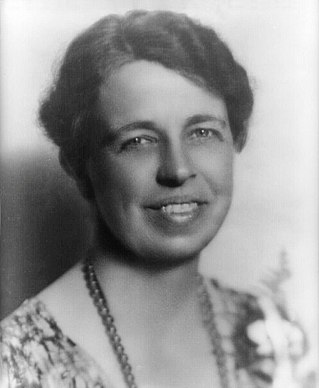
Anna Eleanor Roosevelt was an American political figure, diplomat, and activist. She was the first lady of the United States from 1933 to 1945, during her husband President Franklin D. Roosevelt's four terms in office, making her the longest-serving first lady of the United States. Through her travels, public engagement, and advocacy, she largely redefined the role of First Lady. Roosevelt then served as a United States Delegate to the United Nations General Assembly from 1945 to 1952, and in 1948 she was given a standing ovation by the assembly upon their adoption of the Universal Declaration of Human Rights. President Harry S. Truman later called her the "First Lady of the World" in tribute to her human rights achievements.
Samuel L. Smith was a school administrator and practical architect involved in school design for Rosenwald Schools.
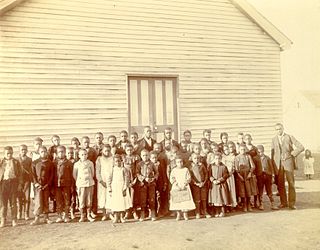
Cadentown School in Lexington, Kentucky was a primary public school for black children in the segregated Fayette County Public Schools from about 1879 to 1922. The building that originally housed Cadentown School, located at 705 Caden Lane, is no longer extant. However, the Rosenwald Fund School is listed on the National Register of Historic Places in Fayette County.
Rosenwald Junior College, located in Panama City, Florida, opened its doors in 1958. It was one of eleven black junior colleges founded in the late 1950s at the initiative of the Florida Legislature. Since racial integration in schools was prohibited by the Florida Constitution of 1885 then in effect, the Legislature wished to avoid the integration mandated in the unanimous Brown v. Board of Education Supreme Court decision of 1954 by demonstrating that a "separate but equal" higher education system existed in Florida for African Americans.

The American Negro Exposition, also known as the Black World's Fair and the Diamond Jubilee Exposition, was a world's fair held in Chicago from July until September in 1940, to celebrate the 75th anniversary of the end of slavery in the United States at the conclusion of the Civil War in 1865.

The Hiram Colored School in Hiram in Paulding County, Georgia was built in 1930. It was listed on the National Register of Historic Places in 2001. The school is located west of Georgia State Route 92 between its junctions with Fitzgerald Street and Alexander Street.

Washington Graded School is a historic school located in Rappahannock County, Virginia. It was constructed around 1923 as a two-teacher school. The building is a "Rosenwald School". Rosenwald schools refer to those buildings constructed for the education of African-American students, with financial support and plans provided by the Rosenwald Fund. Julius Rosenwald, a Chicago philanthropist and president of Sears, Roebuck and Company, along with Booker T. Washington, the principal of Tuskegee Institute, worked with Black communities across the south to build more than 5,000 schools for Black children. Built in 79 localities in Virginia, about half shared the Washington School two-teacher design. The Washington School, which closed in 1963, retains the early look and feel of its rural setting, and exhibits historic integrity of design, workmanship, and materials.



















